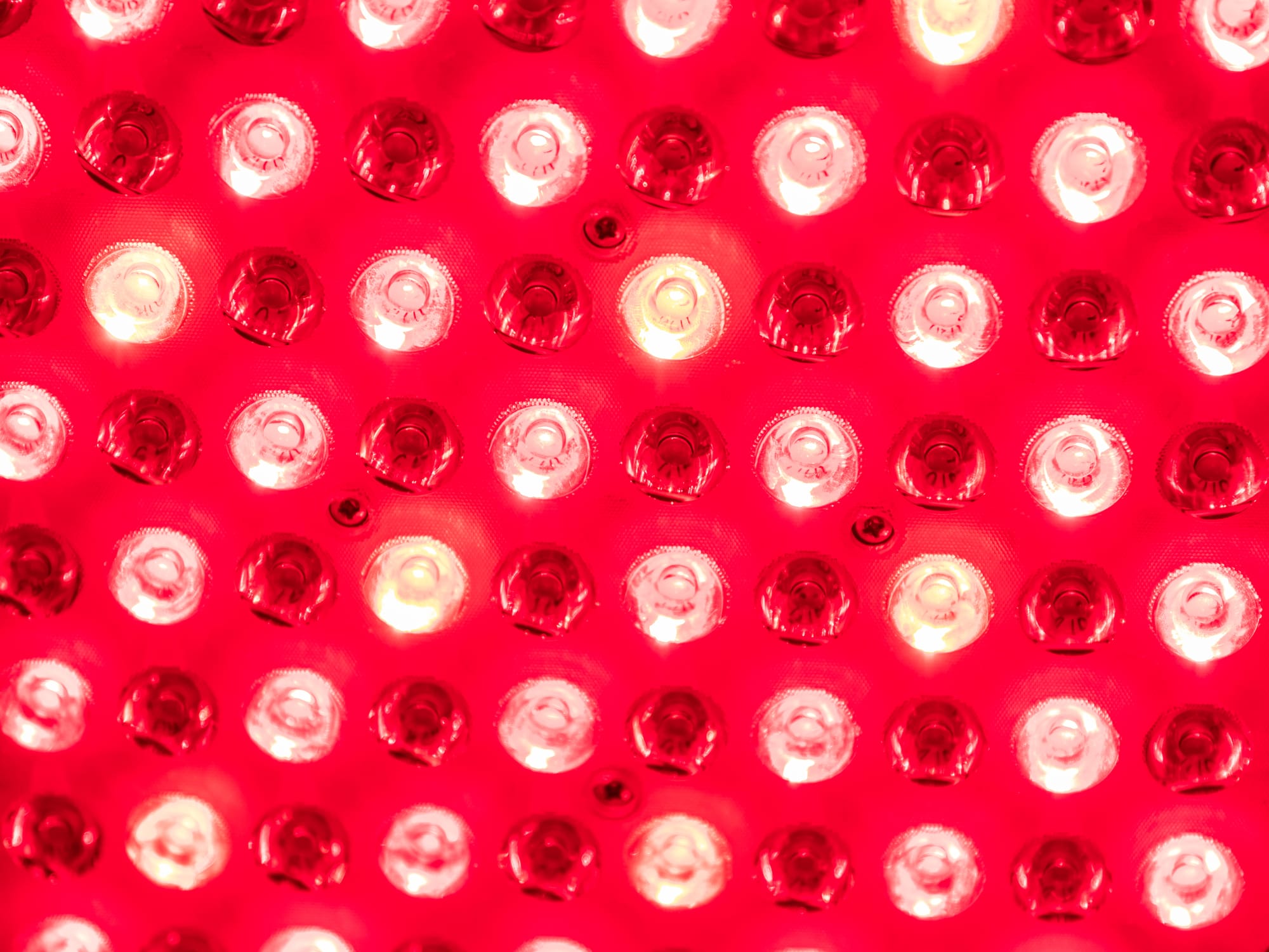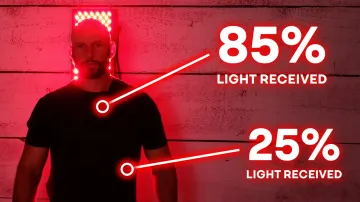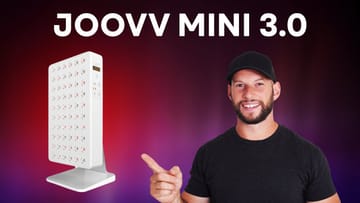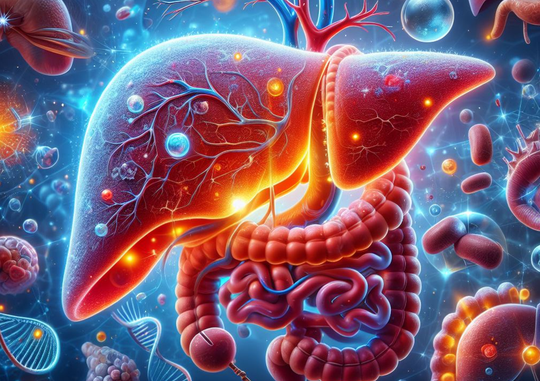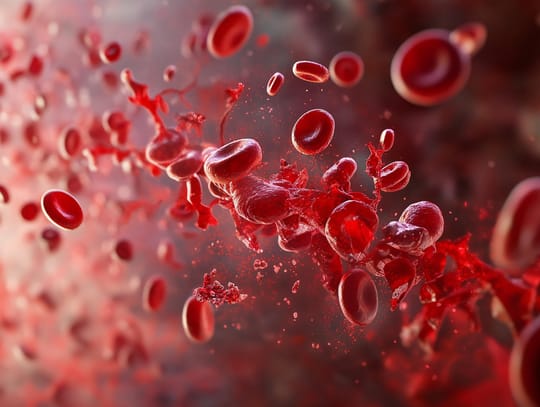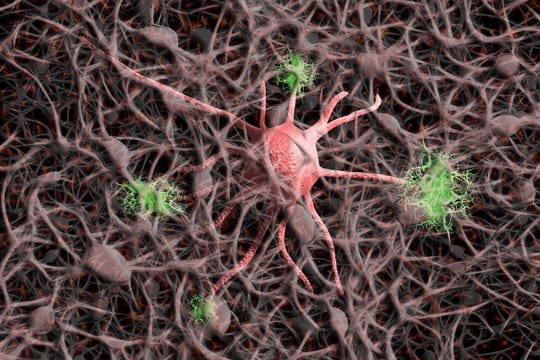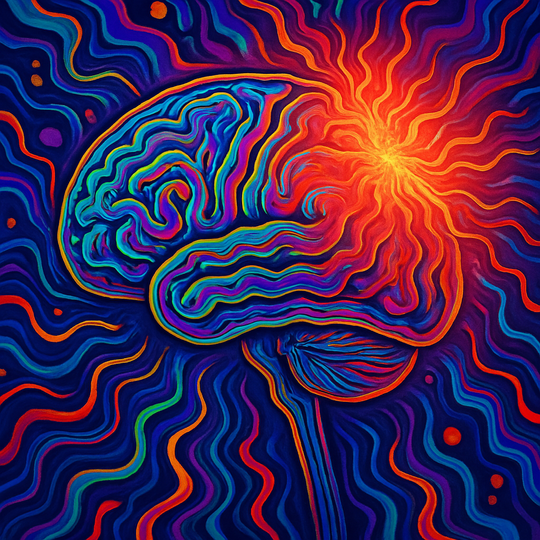So one of the most common questions I get - and others at Light Therapy Insiders - is what the effects of different red light therapy wavelengths are. I therefore decided to create a blog post on this topic, pulling data from previous guides on different wavelengths.
These previous guides are:
- 660nm Wavelength Health Effects Cheatsheet
- 810 Nanometer Wavelength Health Benefits/Effects Cheatsheet
- The 830nm Wavelength Health Effects Cheatsheet
- 850nm Wavelength Health Effects: The Ultimate Guide
- 1,064nm (1,060nm) Wavelength Health Benefits: Everything You Need To Know
Unfortunately, I've not yet been able to complete all guides on all important wavelengths, such as 630nm, 670nm, 760 potentially, and some in the 900s. Nevertheless, many of the most important wavelengths are included here and should tell you about the health benefits they confer on you.
I've only included the human studies in this process, on any topic, whereby 65% of studies or more have a positive outcome. There are huge downsides to this method that I will cover in the later section of this blog. But without further ado, here's the best evidence based on human studies of what different wavelengths do for your health.
But first, a short summary:
These benefits include improvements in bone health, brain function (Alzheimer's, cognitive performance, depression), carpal tunnel syndrome, circulation, skin conditions (acne, herpes, radiation dermatitis), eye health, hair growth, infection resistance (including COVID-19), joint health (osteoarthritis), muscle recovery, and nervous system conditions (Bell's Palsy, diabetic neuropathy).
All of these findings are evidence-based findings. I've added references for each benefit. I describe the caveats and limitations of my approach towards the end of this blog post, as the science on this topic is by no means completed!
Short Version: Basic Overview Of Red Light Therapy Wavelengths
The full breakdown below is a lot more complicated, so here, I want to explain the basic function of different wavelengths and their depth of penetration. Please keep in mind that this is oversimplified:
- Ultraviolet-C (UVC) (100 - 280 nm): generally considered dangerous (and it is if your skin or other organs get exposed), but also used inside the human body for signalling.
- Ultraviolet B (UVB) (280 - 315 nm) - affects the surface skin layer: This wavelength range creates a deep tan in the skin and helps create vitamin D there as well. UVB has many other benefits most people don't know about such as the lowering of stress hormones (cortisol), beta-endorphins (natural painkillers), painkilling, leptin and appetite signalling, anti-virality, bacterial, and fungal properties, and building melanin in the skin, nervous system, and other areas of the body! So 90%+ of the effects of UVB cannot be replaced by just taking a vitamin D pill! UVB counters many skin diseases as well, such as psoriasis.
- Ultraviolet A (UVA) (315 - 400 nm) - penetrates about 1 mm: helps build more of a superficial tan through melanin formation, boosts dopamine and serotonin levels in the eye (which helps create melatonin at night), creates nitric oxide in the skin which boosts blood flow and lowers blood pressure.
- Improperly used, the UVA and UVB can lead to skin inflammation, photoaging, and carcinogenesis.
- Blue light (400 - 500 nm) - penetrates 1 mm max: sets the circadian rhythm (so it tells your body its daytime, when your eyes are exposed), is antibacterial in the skin, counters many skin diseases such as atopic dermatitis, psoriasis, etc, may boost fat loss. Increases wakefulness and mood in the correct dose. There's a difference in effect in high-energy blue (the lower 400s) and the higher-energy blue). Helps wound healing.
- Green light (500 - 570 nm) - penetrates 1-2 mm: The lower range surpresses melatonin just as blue light does (circadian rhythm), likely aids skin health, counters migraines and headaches when it enters your eyes, likely impedes pain, boosts fat loss.
- Amber light (circa 570 - 600 nm) - penetrates 2 mm: Aids skin health, metabolism, and eye health. May have an effect on hair growth!
- Red light (600 - 680 mm) - penetrates 5 mm: Almost uncountable effects that I've listed in great detail below. Boosts mitochondrial function, lowers (systemic) inflammation, and oxidative stress. No effect on melatonin or the circadian rhythm, at least directly through the eye. Red light doesn't rely on heat but on photoacceptors to get its effects. For more info, check below, but more superficial tissues like the eyes and skin benefit more from red light.
- Near-infrared light (680 - 1,300 nm) - penetrates up to a centimeter or inch, depending on the source you refer to: NIR is better for deeper tissue treatment. NIR is better for the brain, joints, and organ function in general. NIR also directly boosts energy production through the mitochondria, lowers oxidative stress and systemic inflammation. NIR is protective against sunburns through the morning sunlight. NIR may boost melatonin and may enhance the structure of water inside the cell (more controversial).
- Middle-infrared light (1,300 - 3,000 nm) - penetrates less deep than NIR: Very little actual science available on this topic, except for some specific topics such as (dental) surgery, such as the Er:YAG laser at 2940 nm for the skin. MIR doesn't directly affect the mitochondria but does produce more heat. The heat here doesn't mean the wavelength isn't therapeutic, just that its effect is different than directly stimulating the mitochondria.
- Far-infrared light (3,000 nm - 1,000,000 nm) - 0.1 mm maximum penetration: FIR mostly has a heating effect on the skin, which then translates to higher body temperatures. FIR is frequently used in infrared saunas. This heat leads to higher blood circulation, which then leads to tons of different health benefits. Check my very extensive red light therapy vs infrared saunas article for a breakdown on the topic! Infrared saunas, including those with FIR, have huge benefits for pulmonary health, heart and blood vessel health (massively lowering your heart attack and stroke risk), diabetes risk, and more!
Want a more in depth analysis of what wavelengths do? Check the list below:
Red Light Therapy Wavelength Benefits: What Do 660nm, 808 & 810nm, 830nm, And 850nm Do?
So here are all the red light therapy wavelength effects, depending on tissue and/or health conditions or health goal.
I've taken all this data from the Excel Sheet of the great Vladimir Heiskanen. That was an extremely time-intensive job but very well worth it.
For each study, I list the number of the study from the respective wavelength cheatsheet, the wavelength, whether it's a human study or not, and whether the study was positive. You'll see what I mean below.
Here you go:
Bone Health Benefits
Bone, Osteoporosis - 1064nm - (9, 1064, human RCT, negative), (10, 1064, human RCT, positive), (11, 1064 vs 633+904, human, positive).
Brain Health Benefits
Brain, Alzheimer's Disease - 808 & 810nm - (65, 800-820, neutral, human RCT), (66, 810, positive, human), (67, 808 vs 1064 vs 808+1064, positive, in vitro), (68, 808, positive, in vitro), (69, 808, positive, animal), (70, 810, positive, human), (71, 630+680+810, positive, animal), (72, 630+810, positive, human), (73, 810, positive human RCT), (74, 810, positive, human), (74, 808, positive, animal), (75, 808, positive, animal), (76, 808, positive, animal).
Brain, Cognitive performance - 1064nm - (17, 852 vs 1064, human RCT, positive), (18, 1064, human RCT, positive), (19, 1064, animal, neutral), (20, 1064, human, positive), (21, 1064, human, positive), (22, 1064, human, positive), (23, 1064, human RCT, positive), (24, 1064, human RCT, positive), (25, 1064, human RCT, positive).
Brain, Depression - 808 & 810nm - (100, 810, positive, animal), (101, 810, positive, animal), (102, 810+830, positive, human), (103, 810+980, positive, human), (104, 808, positive, animal), (105, 630 vs 810, positive, animal), (106, 810, positive, animal), (108, 810, positive, human RCT).
Brain, EEG - 1064nm - (27, 1064, human RCT, positive), (28, 1064, human RCT, positive), (29, 1064, human RCT, positive), (30, 1064, human RCT, positive), (31, 1064, human, positive).
Brain, Functional connectivity - 1064nm - (32, 1064, human RCT, positive), (33, 1064, human RCT, positive), (34, 1064, human RCT, positive).
Brain, Injury - 808 & 810nm - (80, 810, positive, human RCT), (81, 808, animal, positive), (82, 808, positive, animal), (83, 810, positive, animal), (84, 810, positive, animal), (85, 810+980 vs 810, positive, human), (86, 810+980, positive, human), (87, 810, positive, animal), (88, 810, positive, animal), (89, 808, positive, animal), (90, 810, positive, animal), (91, 808, positive, animal).
Brain, Injury - 850nm - (14, 810 vs 850 vs 870, positive, human), (15, 629+850, positive, human), (16, 850, positive, human).
Brain, Opioid Addiction - 808 & 810nm - (59, 810, positive, human RCT), (60, 810, positive, human RCT), (61, 810, positive, human RCT).
Brain, Stroke (Clinical) - 660nm - (39, 630+660+850, human, positive), (40, 660+808+980, human, positive), (41, 660+850, human, positive).
Carpal Tunnel Benefits
Carpal Tunnel, Carpal Tunnel Syndrome - 808 & 810nm - (153, 808 vs 860, positive, human RCT), (154, 780-830, neutral, human RCT), (155, 810, positive, human RCT).
Circulatory Benefits
Circulation, Arterial Retenosis - 808 & 810nm - (185, 808, positive, human RCT), (186, 808, positive, human RCT), (187, 808, positive, human RCT), (188, 808, positive, human RCT), (189, 808, positive, human), (190, 808, positive, human).
Dermatology Benefits
Dermatology, Acne Vulgaris - 660nm - (116, 660 vs 830, human RCT, positive), (117, 420+660, human RCT, positive), (118, 415 vs 415+660 vs white, human RCT, positive).
Dermatology, Herpes Labialis - 660nm - (123, 660, human, positive), (124, 660, human, positive), (125, 660, human, positive), (126, 660, human, positive), (127, 660, human, positive).
Dermatology, Herpes Zoster - 830nm - (138, 830, positive, human RCT), (139, 830, positive, human), (140, 830, positive, human RCT), (140, 830, positive, human), (141, 830, positive, human), (142, 830, positive, human), (143, 830, positive, human).
Dermatology, Radiation Dermatitis - 808 & 810nm - (210, 808+905, positive, human RCT), (211, 808+905, positive, human RCT), (212, 660+805, positive, human), (213, 808+905, positive, human).
Dermatology, Skin Rejuvenation - 660nm - (136, 590+660, human, positive), (137, 440+660+780, human RCT, positive), (138, 660+850, human, positive), (139, 660, in vitro, positive), (140, 660 vs 411-777, human RCT, positive), (141, 660, human, positive), (904, 658, human RCT, negative).
Dermatology, Skin Rejuvenation - 830nm - (157, 640+830, positive, in vitro), (158, 633+830, positive, human), (159, 633+830, positive, human), (160, 633 vs 830 vs 633+830, positive, human RCT), (161, 633+830, positive, human).
Eye Health Benefits
Eyes, Age-Related Macular Degeneration - 660nm - (158, 590+660+850, human, positive), (159, 590+660+850, human RCT, positive), (160, 660, in vitro, positive), (161, 590+660+850, human RCT, positive).
Eyes, Age-related Macular Degeneration - 850nm - (43, 590+660+850, positive, human), (44, 590+660+850, positive, human RCT), (45, 590+660+850, positive, human RCT).
Hair Growth And Health Benefits
Hair, Androgenetic Alopecia - 660nm - (179, 660+808, human RCT, positive), (180, 660, human, positive), (181, 660, human, negative), (182, 650+660, human RCT, positive), (183, 630+650+660, human RCT, positive), (901, 665 vs 665+808, human RCT, positive).
Infection Counteraction Benefits
Infections, COVID-19 - 660nm - (215, 660, animal, positive), (216, 660 vs 660+808, human, positive), (217, 660, human, positive), (218, 660, human RCT, positive), (219, 660, human, neutral), (220, 660, human, positive), (221, 630+660, human, positive), (222, 660, human, positive).
Infections, COVID-19 - 808 & 810nm - (264, 805+905, positive, human RCT), (265, 808+905, positive, human), (266, 808+905, positive, human).
Infections, COVID-19 - 850nm - (58, 633+850+905, positive, human), (59, 650+850, positive, human), (60, 633+850+905, neutral, human RCT).
Joint Benefits
Joints, Osteoarthritis - 660nm - (229, 660+808, human RCT, positive), (906, 658+810, human RCT, positive), (907, 405+658+810, human, neutral).
Joints, Osteoarthritis - 1064nm - (66, 1064, human RCT, negative), (67, 830 vs 1064, human RCT, positive), (68, 1064, human RCT, positive).
Joints, Osteoarthritis (Knee) - 830nm - (222, 830, positive, animal), (223, 830, positive, animal), (224, 830 vs 1064, positive, human RCT), (225, 830, positive, animal), (226, 830, positive, human RCT), (227, 830, positive, human RCT), (228, 830, negative, human RCT), (229, 830, neutral, human RCT), (230, 633+830, positive, human RCT), (231, 830, positive, human).
Joints, Osteoarthritis (knee) - 1064nm - (69, 1064, human, positive), (70, 1064, human RCT, positive), (71, 1064, human RCT, positive), (72, 830 vs 1064, human RCT, positive), (73, 1064, animal, positive).
Joints, Rheumatoid Arthritis - 830nm - (232, 830, positive, animal), (233, 830, positive, animal), (234, 830, positive, human RCT), (235, 830, negative, human), (236, 830, positive, human).
Mechanisms Research (Included For Completeness' Sake)
Mechanisms, Original research - 1064nm - (76, 380 vs 450 vs 530 vs 650 vs 808 vs 1064, in vitro, positive), (77, 800 vs 810 vs 850 vs 1064, human RCT, positive), (78, 660 vs 808 vs 1064, in vitro, positive), (79, 1064, human, positive), (80, 1064, human, positive), (81, 1064, human, positive).
Muscle Benefits
Muscle, Exercise-Related Health Improvements - 808 & 810nm - (364, 808, positive, human RCT), (365, 808, positive, human RCT), (366, 808, neutral, human RCT).
Muscle, Spasticity - 808 & 810nm - (382, 808, neutral, human), (383, 808, positive, human), (384, 808, positive, human).
Muscle, Sports Injuries - 830nm - (283, 830, positive, human), (284, 830, positive, human), (285, 830, positive, human).
Muscle, CNS: Bell's Palsy - 830nm - (286, 830 or 850, positive, human), (287, 830, positive, human), (288, 830, positive, human RCT), (289, 830 vs 1064, positive, human RCT), (290, 830, positive, human), (291, 830, neutral, human).
Nervous System Benefits
Nervous System, CNS: Bell's Palsy - 808 & 810nm - (386, 808+905, positive, human RCT), (386, 808, positive, human), (387, 810, neutral, human RCT), (388, 808, positive, human), (389, 660+808, positive, human), (390, 808, positive, human).
Nervous System, Diabetic Neuropathy - 660nm - (305, 633+660+850, human, positive), (306, 660, human RCT, positive), (307, 633+660+850, human, positive), (308, 660, animal, positive), (309, 633+660+850, human, positive).
Nervous System, Diabetic Neuropathy - 850nm - (129, 633+660+850, positive, human), (130, 633+660+850, positive, human), (131, 633+660+850, positive, human), (132, 850, positive, human RCT), (133, 780 vs 850, positive, animal),
Oral Health Benefits
Oral, Aphthous Stomatitis - 660nm - (372, 660, human RCT, positive), (373, 660 vs 10600, human RCT, negative), (373, 660, human RCT, positive), (374, 660, in vitro, neutral), (375, 660, human, positive), (912, 658, human RCT, positive).
Oral, Aphthous Stomatitis - 808 & 810nm - (447, 810, positive, human RCT), (448, 810, neutral, human), (449, 809, positive, human RCT).
Oral, Burning Mouth Syndrome - 660nm - (381, 660-970, human RCT, positive), (382, 660, human RCT, positive), (383, 660, human, positive), (384, 660, human, positive).
Oral, Dentin Hypersensitivity - 660nm - (400, 660+1064+1340, human, positive), (401, 660+810, human RCT, positive), (402, 660+808, animal, positive), (403, 660, human RCT, positive), (404, 660, human RCT, positive), (405, 660, in vitro, positive), (406, 660, human RCT, positive), (407, 630 vs 660, human RCT, positive), (408, 660, human RCT, neutral), (409, 660+830, human, positive), (410, 660, human, positive).
Oral, Dentin Hypersensitivity - 808 & 810nm - (480, 808, positive, human RCT), (481, 808, positive, human), (482, 660+810, positive, human RCT), (483, 660 vs 808, positive, animal), (484, 808, positive, human RCT), (485, 810, neutral, human RCT), (486, 808, positive, human RCT), (487, 810 vs 1,064, positive, human RCT), (488, 808, positive, human), (489, 810, positive, human RCT), (490, 810, positive, human RCT), (491, 810, positive, human RCT), (492, 810, positive, human), (493, 810+2,780, positive, human RCT), (494, 810, positive, human RCT), (495, 808, positive, human RTC), (496, 810, positive, human RCT).
Oral, Dentin hypersensitivity - 1064nm - (93, 660 vs 1064 vs 1340, human, positive), (94, 810 vs 1064, human, positive), (95, 1064, human RCT, positive), (96, 633 vs 633+1064, human RCT, positive).
Oral, Dry Mouth (Xerostomia / Hyposalivation) - 660nm - (411, 660+808, human, positive), (412, 660+810, human RCT, negative), (413, 660+780, human, positive), (414, 660+780, human, positive), (415, 660, human, positive).
Oral, Endodontics: Postoperative Symptoms - 808 & 810nm - (508, 660+808, negative, human RCT), (509, 808, positive, human RCT), (510, 808, positive, human RCT), (511, 808, positive, human RCT), (512, 808, neutral, human RCT), (513, 809, positive, human RCT).
Oral, Graft-Versus-Host Disease - 660nm - (450, 660, human, positive), (451, 660, human, positive), (452, 660, human, positive), (453, 660+810+850, human, positive), (454, 660 vs 660+850, human, positive).
Oral, Lichen Planus - 660nm - (457, 660, human RCT, negative), (458, 660, human RCT, positive), (459, 660, human RCT, positive), (460, 660, human RCT, positive).
Oral, Mastication - 808 & 810nm - (529, 808, positive, human), (530, 808, positive, human), (531, 810, neutral, human RCT).
Oral, Nerves: Inferior Alveolar - 808 & 810nm - (535, 808, positive, human RCT), (536, 808, positive, human), (537, 810, positive, human), (538, 810, positive, human), (539, 808, neutral, human), (540, 810 vs 980, positive, animal), (541, 660+808, positive, human), (542, 660+808, neutral, animal), (543, 660+810, positive, human RCT), (544, 810, positive, human RCT), (545, 632+810, neutral, human RTC), (546, 810, positive, human RCT).
Oral, Nerves: Inferior Alveolar - 830nm - (351, 830, negative, human RCT), (352, 820-830, positive, human), (353, 820-830, positive, animal), (354, 820-830, positive, human), (355, 830, positive, human).
Oral, Oral Mucositis - 660nm - (474, 660, human, positive), (475, 660, human RCT, negative), (476, 660, animal, positive), (477, 660+780, animal, positive), (478, 660+780, animal, positive), (479, 660 vs 810 vs 660+810, human RCT, positive), (480, 660, animal, positive), (481, 468 vs 660, human, positive), (482, 660+850, human RCT, positive), (483, 660+810+980, human RCT, positive), (484, 660, human, neutral), (485, 660, human RCT, positive), (486, 660, human, positive), (487, 660, human RCT, positive), (488, 660, human RCT, neutral), (489, 660, human, positive), (490, 660, human RCT, positive), (491, 660, human, positive), (492, 660, human, positive), (493, 660, human, neutral), (494, 660, human RCT, neutral), (495, 660, human, positive), (496, 660, human, positive), (497, 660 vs 810+980, animal, positive), (498, 660, human, positive), (499, 970 vs 660+800+970, human+in vitro, positive), (500, 660+808, human, positive), (501, 660+808, human RCT, positive), (502, 660+808, human RCT, positive), (503, 660, human RCT, positive), (504, 660+970, human RCT, positive), (505, 660, human, positive), (506, 660, human, positive), (507, 660, human, positive), (508, 660, human RCT, positive), (509, 660, human, positive), (510, 660, human, positive), (511, 660, human RCT, positive), (512, 660, animal, positive), (513, 660+ 808, human, positive), (514, 660+850, human, positive), (515, 660, human, positive), (516, 660, human, positive), (517, 635+808+660, animal, positive), (518, 660, human RCT, positive), (519, 660 vs 810 vs 980 vs 1064, animal, positive), (520, 660, human RCT, positive), (521, 660, human RCT, positive), (522, 660, human RCT, positive), (523, 660, human, positive), (524, 660, animal, positive), (525, 630 vs 660, human, positive), (526, 660 vs 810 vs 980 vs 1064, animal, positive), (527, 660+670, animal, positive), (528, 660, animal, positive), (529, 660+760, human, positive), (530, 660 vs 830, human, positive), (531, 660, human RCT, positive), (532, 660, human RCT, negative), (533, 660, haman RCT, positive), (534, 660, human RCT, positive), (535, 660, human positive), (536, 660+780, human, positive), (537, 660, human, positive), (538, 660, animal, neutral), (539, 660+808, human, neutral), (540, 660, animal, neutral), (541, 660+
780, human, positive), (542, 660, animal, positive), (543, 660, human, positive), (543, 660, human, positive), (544, 660, human, positive), (545, 660, human, positive), (546, 660, human RCT, positive), (914, 658, human RCT, negative).
Oral, Oral Mucositis - 808 & 810nm - (551, 660 vs 810 vs 660+810, positive, human RCT), (552, 660 vs 810+980, positive, human RCT), (553, 810, neutral, human RCT), (554, 635+815, positive, human), (555, 810, negative, animal), (556, 660 vs 810+980, positive, animal), (557, 660 vs 808, positive, human RCT), (558, 660 vs 660+808, positive, human RCT), (559, 660 vs 808, positive, human), (560, 635+808+660, positive, animal), (561, 660 vs 810 vs 980 vs 1064, positive, animal), (562, 660 vs 810 vs 980 vs 1064, positive, animal), (563, 660 vs 808, neutral, human).
Oral, Oral Mucositis - 830nm - (358, 830, positive, human RCT), (359, 830, positive, human RCT), (360, 685+830, positive, human RCT), (361, 660 vs 830, positive, human), (362, 830, positive, human), (363, 830, positive, human), (364, 830, positive, human), (365, 830, positive, human), (366, 830, positive, human).
Oral, Orthodontics: Pain - 808 & 810nm - (578, 808, positive, human RCT), (579, 808, positive, human), (580, 808, positive, human RCT), (581, 808+10,600, neutral, animal), (582, 808, positive, human RCT), (583, 810, positive, human RCT), (584, 660+810, positive, human RCT), (585, 810, neutral, human RCT).
Oral, Orthodontics: Pain - 830nm - (373, 830, negative, human RCT), (374, 830, positive, human), (375, 830, positive, human RCT), (376, 830, positive, human RCT), (377, 830, neutral, human RCT), (378, 830, positive, human RCT), (379, 830, positive, human RCT), (380, 830, positive, human RCT), (381, 830, positive, human RCT), (382, 830, positive, human RCT), (383, 830, negative, human RCT).
Oral, Orthodontics: Tooth Movement - 850nm - (154, 850, positive, human), (155, 850, positive, human), (156, 850, positive, human), (157, 850, positive, human), (158, 850, negative, human RCT), (159, 850, negative, animal), (160, 850, negative, animal), (161, 850, neutral, human RCT), (162, 850, positive, human RCT), (163, 850, positive, human RCT), (164, 850, positive, human RCT), (165, 630+850, negative, animal).
Oral, Osteonecrosis - 660nm - (563, 660, animal, positive), (564, 660+808, human, positive), (565, 660, human positive), (566, 660+808, human, positive), (567, 660+808, human, positive), (568, 660+808, human, positive), (569, 660, animal, positive), (570, 660, human, positive).
Oral, Osteonecrosis - 1064nm - (106, 1064, human, positive), (107, 1064, human, positive), (108, 1064, human, positive).
Oral, Periodontium: Surgical Treatment - 808 & 810nm - (647, 808, positive, human RCT), (648, 810, neutral, human RCT), (649, 810, positive, human).
Oral, TMD - 660nm - (613, 660, human RCT, negative), (614, 660+808, human RCT, positive), (615, 660+850, human RCT, positive), (616, 660+808, human, positive), (617, 660, human RCT, positive), (618, 660, human RCT, positive), (619, 660 vs 795, human RCT, positive), (620, 660 vs 780 vs 790 vs 830, human, neutral).
Oral, TMD - 830nm - (409, 830, negative, human RCT), (410, 830, neutral, human RCT), (411, 830, positive, animal), (412, 830, positive, human RCT), (413, 830, positive, human), (414, 840, positive, animal), (415, 830, positive, human), (416, 830, positive, human), (417, 660 vs 780 vs 790 vs 830, neutral, human), (418, 830, neutral, human RCT), (419, 830, positive, human), (420, 830, positive, human), (421, 830, positive, human), (422, 830-904, positive, human), (423, 633 vs 670 vs 830, positive, human), (424, 830, negative, human RCT), (425, 633 vs 670 vs 830, positive, human).
Oral, Tooth Extraction - 660nm - (622, 660+830, animal, positive), (623, 660, human, negative), (624, 660+810, human RCT, positive), (625, 660, human RCT, positive), (626, 660, human RCT, positive), (627, 660+808, human RCT, neutral), (628, 660, human, positive), (629, 660+810, human RCT, positive), (630, 660 vs 808, animal, positive), (631, 660 vs 810 vs 660+810, human RCT, positive), (632, 660, human RCT, positive), (633, 660, human RCT, positive), (634, 660, human RCT, negative), (635, 660+808, human RCT, negative), (636, 660+810, human RCT, positive), (637, 660, human, positive), (638, 660, human RCT, neutral).
Oral, Tooth extraction - 1064nm - (123, 1064, human RCT, positive), (124, 1064, human RCT, positive), (125, 1064+2940, human RCT, positive), (126, 1064, human RCT, positive), (127, 808 vs 1064, human, positive).
Pain Benefits (Acute And Chronic)
Pain, Back Pain - 808 & 810nm - (744, 808, positive, human RCT), (745, 808, positive, human RCT), (746, 810+980+1064, positive, human), (747, 810, positive, human), (748, 808, positive, human), (749, 810, positive, human RCT).
Pain, Back Pain - 830nm - (442, 650 vs 830, positive, human RCT), (443, 830, positive, human RCT), (444, 830, positive, human), (445, 830, negative, human RCT), (446, 830, positive, human).
Pain, Back pain - 1064nm - (129, 850+1064, human RCT, positive), (130, 1064, human RCT, positive), (131, 785 vs 1064, human, negative), (132, 1064, human, neutral), (133, 650 vs 810 vs 810+980+1064, human, positive), (134, 810+980+1064, human, positive), (135, 1064, human, positive), (136, 1064, human RCT, positive), (137, 1064, human RCT, neutral).
Pain, Heel Pain - 830nm - (452, 830 or 850, positive, human), (453, 830, positive, human RCT), (453, 830, negative, human RCT).
Pain, Heel Pain - 850nm - (182, 850, positive, human RCT), (183, 830 v 850, positive, human RCT), (184, 850, neutral, human RCT).
Pain, Heel pain - 1064nm - (138, 1064, human, positive), (139, 785 vs 1064, human, positive), (140, 1064, human RCT, negative), (141, 904+1064, human RCT, positive).
Pain, Multiple Sites - 830nm - (463, 830, positive, human), (464, 830, positive, human RCT), (465, 830, positive, human), (466, 830, positive, human).
Pain, Neck - 830nm - (469, 830, negative, human RCT), (470, 808+905 vs 830, positive, human RCT), (471, 830, positive, human RCT).
Pain, Shoulder - 850nm - (186, 640+850, positive, human), (187, 850, positive, human RCT), (188, 850, negative, human RCT).
Pain, Shoulder - 1064nm - (145, 904 vs 1064, human RCT, positive), (146, 1064, human RCT, positive), (147, 1064, human RCT, neutral), (148, 1064, human, negative), (149, 1064, human RCT, positive), (150, 1064, human RCT, positive), (151, 1064, human, positive), (152, 1064, human RCT, neutral), (153, 1064, human, positive).
Penetration Depth Studies
Penetration, Brain - 808 & 810nm - (774, 808, positive, animal), (775, 660 vs 808 vs 940, positive, human), (776, 671 vs 808, positive, human), (777, 405 vs 532 vs 589 vs 658 vs 810 vs 830, positive, human).
Respiratory System Benefits
Respiratory System, Allergic Rhinitis - 660nm - (688, 660+940, human, positive), (689, 660, animal, positive), (690, 660, human RCT, neutral), (691, 660, human, positive), (692, 660, human RCT, positive), (916, 658, animal, positive).
Respiratory System, Allergic Rhinitis - 830nm - (499, 670+830, positive, human RCT), (500, 830, positive, human), (501, 830, positive, human).
Sleep Benefits
Sleep Medicine, Sleep Quality - 660nm - (717, 660+740+810+870, human RCT, neutral), (718, 660+850, human, neutral), (917, 658, human RCT, positive).
Surgical Benefits
Surgery, Cardiac Surgery - 660nm - (740, 660, human RCT, positive), (741, 660, human RCT, positive), (742, 660, human RCT, positive), (743, 640+660, human RCT, positive), (744, 640+660, human RCT, positive), (745, 660, human RCT, positive), (748, 660+950, human, positive).
Tendon Benefits
Tendons, Tennis elbow - 1064nm - (170, 1064, human RCT, positive), (171, 1064, human RCT, positive), (172, 1064, human, positive), (173, 1064, human RCT, positive),
Thyroid Benefits
Thyroid, Hypothyroidism - 830nm - (547, 830, positive, human RCT), (548, 830, positive, human RCT), (549, 830, positive, human RCT), (550, 830, positive, human RCT), (551, 830, positive, human RCT).
Wound Healing Benefits
Wound Healing, Burns (Clinical) - 808 & 810nm - (865, 808, positive, human), (866, 655+808, positive, human), (867, 650+660+810, positive, human).
Wound Healing, Diabetic Foot Ulcer - 660nm - (833, 660, human, negative), (834, 660+800+970, human, positive), (835, 632+660+850, human, positive), (836, 625+660+850 vs 580-900, human, neutral), (837, 660, human RCT, positive), (838, 660, human RCT, positive), (839, 250+660+820+880, human, positive), (840, 660+890, human RCT, positive), (841, 660+890, human, positive), (922, 648, human RCT, positive).
Wound Healing, Diabetic Foot Ulcer - 830nm - (561, 830 vs 850, positive, human), (562, 830, positive, human), (563, 633+830, neutral, human).
Wound Healing, Pressure Ulcer - 660nm - (887, 660, human, positive), (889, 660+820+870+880+940+950, human RCT, neutral), (923, 658 vs 808 vs 940, positive, human RCT), (924, 658 vs 808 vs 940, human RCT, positive)
Wound Healing, Venous Ulcer - 660nm -(890, 660+880, human RCT, positive), (891, 660+950, human RCT, neutral), (892, 660+880, human RCT, positive), (893, 660+880, human, positive).
Red Light Therapy Wavelengths In Context: How To Interpret The List Above
So, how do you interpet the results I've listed above? And what are the limitations to my approach? I've listed a few of them below - many of which I've considered in previous articles but I still wanted to include them as I cannot assume that you've read all of my other blog posts.
So here you go, the limitations of the approach I've listed above:
- I don't differentiate between the type of human study. So a study can be with the design of the gold standard in medicine, the randomized controlled trial, or not. The study can have many participants or not. The study can have big methodological flaws or not. The only thing I've done is use Vladimir's categorization of whether the outcome of a study was positive, neutral, or negative. I've then used that data to make guides on individual wavelengths and their health effects.
- I've emailed with Vladimir Heiskanen and we both agree that there are I've emailed Vladimir Heiskanen, and we both agree that there are better approaches than the one I take above. Ideally, you'd do a systematic review on each individual topic. But resources are limited and I work for a for-profit company. We don't get government funding and we cannot spend 150 hours writing a review for each of the, let's say, 200 or 400 different topics (that's a wild guesstimate). So, with constraints on resources, this is the best I could do.
- We still don't know to what extent wavelengths overlap or differ from each other with their biological effects. I tend to think that there's a difference, simply because there's a difference in blue light between let's say, 420nm and 470nm light. There's a difference in biological effect between UV light found at 320nm and 370nm. So I also believe that in the red or infrared light spectrum, there's a difference between the biological effects of wavelengths. To know the answer for sure, however, you'd need comparison studies.
- Also, keep in mind that many of the studies listed above - perhaps almost all - are done with non-LED panels. LED panels work a bit different than lasers, for instance, because they cover a more significant area of the body and are applied differently. So, that's another reason these studies may not be generalized one-on-one to what you're getting with LED panels - although I do think there's a strong overlap.
- My method of choosing a 65% positivity rate is also arbitrary. But I think that cutoff point is decent and defensible. Roughly two out of three studies need a positive outcome for the health effect recommendation of a wavelength, in human studies, to be included above. Also, at least three studies need to be available!
- You can make a ton of additional criticism to my methodology. I can list a lot of other limitations here as well but I won't go into them. Some of that criticism is covered in my YouTube interview with Alex about the 810nm wavelength health effects.
- Overall though, I think this wavelength benefits guide is the best there is currently on the internet. It's simple without being too oversimplifying. Whenever I see infographics on the internet on what each wavelength does, without any reference to studies where they took the data from, I know it's a complete lie. You're either making your conclusions untraceable, which is bad science, or you're cherry-picking studies without considering the whole of studies that are available on a single topic. Both are wrong, in my opinion!
- Moreover, don't take this guide on blind faith. All studies for each of the benefits are included. So if you know to what extent a wavelength has benefits or not, for a given goal, then you will have to read the studies yourself. I cannot read the studies for you or tell you about all of these topics how strong the evidence really is, such as study quality or effect size (how strong an effect is of an intervention.
- Lastly, I will update this guide over time, as I add the 630nm cheatsheet, that on 670nm, and so forth. So stay tuned as it's a work in progress!
Red Light Therapy Wavelengths Explained: Frequently Asked Questions
Below I'll answer some frequently asked questions about red light therapy wavelengths:
How Deep Does Red Light Therapy Penetrate?
Red light therapy penetrates up to several inches in depth. I'll write a blog post about this topic soon. Generally, red wavelength penetrate less deeply than near-infrared wavelengths.
What’s The Most Effective Wavelength?
There's no "most effective" red light therapy wavelength. As this topic stands now, different wavelengths have different effects. But as you can see, there's still a huge discussion about how much there's a difference between wavelengths that are located very closely to each other.
For instance, there may be overlap between 650-nm red light and the 660 nm wavelength. And 850 nm red light therapy's effects may be similar to that of 830nm, in part (although it may also be different!). To know the full extent of the difference, we simply need more research. So, you want a combination of red light therapy effective wavelengths for the best results.
To be safe, if you want the 660 nm red light benefits, then use a product that emits 660 nm light. If you want the 810 nm benefits, use a product that emits that wavelength, etc!
What Type of Wavelength Is Not Used in Red Light Therapy?
Traditionally, violet, blue, green, and amber or yellow light weren't included in red light therapy. Recent products have included these wavelengths into new products though - a topic I'll talk about in a second.
The Applications Of Red Light Therapy Wavelengths
So what if you want to maximize the benefits of red light therapy? You'll want to select a product that emits many different wavelengths.
So, best red light therapy wavelength for thyroid device, you can see in the list I've added above that 830nm is the proven wavelength in that instance. But how do you know which device emits what wavelength? For that, I'll introduce the red light therapy shopping tool
So let's give a few examples of what you can accomplish in that shopping tool. At the right side of the screen in the shopping tool, you can filter for specific wavelengths that are emitted by products:

That way, if you want a panel that emits, say, 630 nm, 660 nm, 810 nm and 830 nm, you can see all products that are sold online with that specification.
What about the best red light skin therapy wavelength? Go to the wavelenght guide above and observe that 660 nm and 830 nm have the best evidence for "skin rejuvenation". That way, you'll know what product to choose!
Basically, the shopping tool should help you get the wavelength of red light therapy you need. So whether you want a red light therapy anti-aging wavelength or the best red light therapy wavelength for wrinkles, check my list above and go to the shopping tool to make a selection. The shopping tool also contains links to all the reviews of diferent products.
Finally, let's conclude:
Conclusion: Red Light Therapy Wavelength Effects Are A Work In Progress
This red light therapy wavelength work isn't finished at all. Hopefully, in the future, I've got the resources to make it a lot more nuanced and extensive than it currently is.
Nevertheless, I hope people get some benefit from this guide. I also hope people keep thinking for themselves and don't accept this guide as universal truth but think critically about its implications, also of each of the goals listed and their respective studies.
This is a post by Bart Wolbers. Bart finished degrees in Physical Therapy (B), Philosophy (BA and MA), Philosophy of Science and Technology (MS - with distinction), and Clinical Health Science (MS), has had training in functional medicine, and is currently chief science writer at Lighttherapyinsiders.com
Found This Interesting? Then You Might Like:
- 660nm Wavelength Health Effects Cheatsheet
- 810 Nanometer Wavelength Health Benefits/Effects Cheatsheet
- The 830nm Wavelength Health Effects Cheatsheet
- 850nm Wavelength Health Effects: The Ultimate Guide
- 1,064nm (1,060nm) Wavelength Health Benefits: Everything You Need To Know

